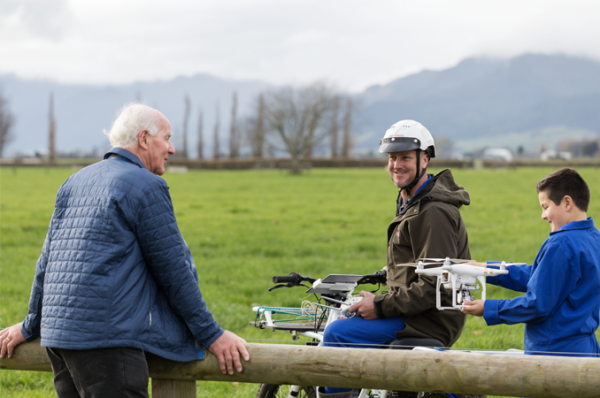AgResearch – with partners the Universities of Auckland and Michigan and NZ-based technology firm Redfern Solutions Limited - has been awarded just under $1 million from the Ministry of Business Innovation and Employment’s Endeavour Fund to look into how to “map and zap” the many weeds plaguing productive land.

A recent study led by AgResearch concluded from available research that the known costs of weeds to New Zealand agriculture was at least $1.685 billion a year, but that the true cost from all weeds was likely to be much higher. Environmentally friendly tools are being urgently sought for the early control of these weeds.
“The idea is to mount specialist cameras on the drone or UAV (Unmanned Aerial Vehicle) that can first identify the weeds based on their unique chemical signatures and how they reflect light, and precisely map their locations using GPS,” says programme leader Dr Kioumars Ghamkhar.
“From there, we think smart spraying (rather than systemic and non-targeted use of chemicals), or the right kind of laser mounted on the drone could hone in and damage the weed. We know there are lasers now available that could be suitable, and that they are extremely accurate, so if lasers are used, it would also avoid damaging the useful plants around the weed.”
Dr Ghamkhar says the current methods for tackling weeds can be very expensive and time-consuming, and often involve chemicals which can impact on crops, soil quality or water sources.
“We want to develop something that could be an efficient option for users such as farmers, regional councils and the Department of Conservation. We’ve already spoken with our collaborators in the universities about the lasers that are available that might be suitable. The effectiveness of lasers against plants has been tested overseas before but that was in the lab, and we’ll be taking it out in the field to test and see if it works as we have planned.”
“We’ll be starting with testing of different types of laser with plants at three different stages of growth in the lab, and from there we will select the best form of laser to see its impacts on the weeds out on a farm.”
“There are issues we would have to consider such as heat generated by the lasers, and the risk of starting fire, and we’ll be very conscious of this particularly where there are dry days or drought conditions. We’ll also be looking at using a group of small lasers to direct at the weed, as opposed to one large and powerful laser that might generate more heat.”
Dr Ghamkhar says the method of identifying different plants by chemical signature has already been shown to be workable in other AgResearch projects, and the challenge now is to accurately identify weeds in the same way so use of the drone-mounted laser can be effective, or at a minimum targeted spraying from equipment mounted on the drone.
The programme is funded for a period of three years, and if successful could lead to potential for commercial development.
Information about the weeds affecting agricultural land in New Zealand can be found at www.agpest.co.nz(external link)